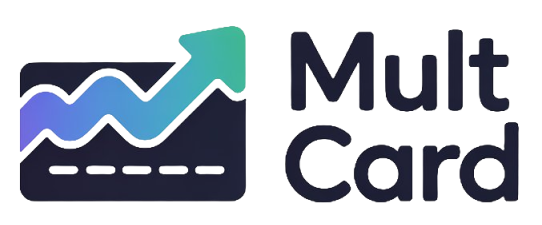In today’s fast-paced digital world, accessing funds has never been easier. Online loans offer a quick, convenient, and often more accessible alternative to traditional bank lending. With just a few clicks, you can apply for and receive funds, sometimes within the same day. This convenience, however, is a double-edged sword. Without a clear plan, it’s easy for a helpful financial tool to become a burdensome debt.
The key to leveraging an online loan effectively lies in intention. It’s not just about getting the money; it’s about using it strategically to improve your financial standing, handle emergencies, or invest in your future. This guide will walk you through the most intelligent and responsible ways to use an online loan, ensuring it serves as a stepping stone, not a stumbling block, on your financial journey.
Understanding Online Loans: A Quick Refresher
Before diving into the strategic uses, it’s crucial to understand what makes online loans different and what to look for before you commit. Unlike loans from a brick-and-mortar bank, online lenders operate entirely on the internet, which streamlines the entire process.
What Sets Them Apart?
The primary appeal of online loans comes down to three factors: speed, convenience, and accessibility. The application process is typically shorter, requires less paperwork, and can be completed from anywhere. Furthermore, many online lenders have more flexible eligibility criteria, making them an option for individuals with less-than-perfect credit who might be turned away by traditional institutions.
Key Considerations Before You Apply
While the benefits are clear, it’s vital to be a discerning borrower. Pay close attention to the Annual Percentage Rate (APR), which includes the interest rate plus any fees. This gives you the true cost of borrowing. Also, understand the repayment terms—how long you have to pay it back and the amount of your monthly payment. Always read the fine print for details on origination fees, prepayment penalties, or late payment charges.
| Feature | Online Loans | Traditional Bank Loans |
|---|---|---|
| Application Process | Quick, digital, minimal paperwork | In-person or online, more documentation |
| Approval Speed | Minutes to a few hours | Days to weeks |
| Funding Time | As fast as the same business day | Several business days |
| Credit Requirements | Often more flexible; options for various credit scores | Typically require good to excellent credit |
| Interest Rates | Can be competitive, but may be higher for bad credit | Often lower for well-qualified applicants |
The Smartest Financial Moves to Make with an Online Loan
When used correctly, an online loan can be a powerful catalyst for positive financial change. Here are some of the most effective strategies for putting borrowed funds to work for you.
1. Consolidating High-Interest Debt
This is arguably one of the most popular and intelligent uses for a personal loan. If you’re juggling multiple high-interest debts, such as credit card balances or payday loans, consolidating them into a single loan can be a game-changer. The goal is to secure a loan with a lower interest rate than the average rate you’re currently paying on your other debts.
- Simplified Finances: You replace multiple due dates and payments with a single, predictable monthly payment.
- Cost Savings: A lower interest rate means more of your payment goes toward the principal balance, not just interest, potentially saving you hundreds or thousands of dollars.
- A Clear Finish Line: Unlike credit cards with their revolving balances, a personal loan has a fixed term. You know exactly when you will be debt-free.
- Potential Credit Score Boost: Paying off credit cards with an installment loan can lower your credit utilization ratio, which may positively impact your credit score.
2. Funding Essential Home Improvements or Repairs
Using a loan for home improvements requires a distinction between wants and needs. While financing a new hot tub might not be the wisest move, funding essential repairs or value-adding renovations is a different story. Think of projects that increase your home’s equity, safety, or functionality.
Smart uses in this category include:
- Replacing a failing roof or HVAC system.
- Remediating mold or fixing foundational issues.
- Updating a kitchen or bathroom, which often provides a high return on investment.
- Making your home more energy-efficient with new windows or insulation.
These investments not only improve your quality of life but can also increase the resale value of your property, making the loan a net positive for your financial portfolio.
3. Covering Unexpected Medical Emergencies
Even with good health insurance, an unexpected medical event can result in significant out-of-pocket costs. From high deductibles and co-pays to treatments not fully covered, medical bills can quickly become overwhelming. An online loan can provide immediate funds to cover these costs, preventing them from going to collections and damaging your credit.
In these stressful situations, the speed of an online loan is a major advantage. It allows you to focus on recovery without the added burden of negotiating with medical billing departments from a position of financial distress.
4. Investing in Your Career or Education
Sometimes you have to spend money to make money. An online loan can be a smart investment in your human capital. This could mean paying for a professional certification, a coding bootcamp, or specialized training that can directly lead to a promotion, a higher-paying job, or a new career path. Before taking out a loan for this purpose, do a cost-benefit analysis. Realistically estimate the potential increase in your income and ensure it justifies the cost of the loan.
5. Bridging a Temporary Cash Flow Gap (With Caution)
For small business owners, freelancers, or commissioned employees, income can be irregular. An online loan can be a responsible way to bridge a short-term, predictable gap in cash flow. For instance, you might use it to cover operational expenses while waiting for a large client invoice to be paid. The key here is “temporary” and “predictable.” This is not a solution for a failing business model or chronic overspending, but a strategic tool to maintain stability during a temporary shortfall.
When an Online Loan Might Be a Bad Idea
Just as important as knowing when to use a loan is knowing when not to. Taking on debt for the wrong reasons can quickly spiral into a financial nightmare. Avoid using an online loan for:
- Discretionary Spending: This includes vacations, luxury goods, expensive weddings, or concert tickets. If it’s not a necessity, it’s better to save up for it.
- Paying for Routine Expenses: If you need a loan to cover your regular monthly bills like rent or groceries, it’s a sign of a deeper budgeting issue that more debt won’t solve.
- Speculative Investments: Using borrowed money for high-risk investments like cryptocurrency or volatile stocks is extremely risky. You could lose the entire investment and still be on the hook for the loan.
- Without a Repayment Plan: Never borrow money without a clear, realistic budget that shows you can comfortably afford the monthly payments.
A Step-by-Step Guide to Applying for an Online Loan Wisely
Once you’ve determined you have a smart reason to borrow, follow these steps to ensure you get the best possible deal and manage the debt responsibly.
Step 1: Assess Your Financial Health
Before you even look at lenders, look at your own finances. Check your credit score, as this will be the biggest factor in determining your eligibility and interest rate. Then, calculate your debt-to-income (DTI) ratio. Lenders use this to gauge your ability to handle new debt.
Step 2: Compare Lenders and Loan Offers
Don’t accept the first offer you receive. Use online comparison tools to shop around and get pre-qualified from multiple lenders. Pre-qualification typically involves a soft credit check, which won’t hurt your score. Create a simple table to compare the offers side-by-side.
| Lender | APR Range | Loan Term (Months) | Fees (Origination, etc.) |
|---|---|---|---|
| Lender A | 6.99% – 19.99% | 36 – 60 | 0% – 4% |
| Lender B | 7.50% – 24.50% | 24 – 48 | 1% – 5% |
| Lender C | 8.99% – 29.99% | 36 – 72 | None |
Step 3: Read the Fine Print
Once you’ve chosen a lender, meticulously read the loan agreement. This is a legally binding contract. Look for any mention of prepayment penalties (a fee for paying the loan off early) or ambiguous language about fees. If you don’t understand something, ask for clarification before you sign.
Step 4: Create a Repayment Strategy
Your responsibility doesn’t end when the money hits your account. Immediately incorporate the new monthly payment into your budget. Set up automatic payments to avoid ever being late, which can incur fees and damage your credit. If possible, consider making extra payments to pay the loan off faster and save on interest.
Maximizing the Positive Impact of Your Loan
The true measure of a smart loan is its long-term impact. If you’ve used it for debt consolidation, commit to not running up your credit card balances again. If you’ve funded a home repair, enjoy the peace of mind and potential increase in your home’s value. The discipline you practice in repaying the loan can build positive financial habits that last a lifetime.
An online loan is a financial tool, plain and simple. Like any tool, its usefulness is determined by the skill and intention of the person wielding it. By approaching it with a clear purpose, diligent research, and a commitment to responsible repayment, you can transform it into a powerful force for good in your financial life.
Ultimately, the goal is to use debt to create a better financial future, whether that’s through lower interest costs, a more valuable asset, or an increased earning potential. For more information from a trusted consumer resource, you can explore the various smart ways to use an online loan and understand the fundamentals of personal borrowing.




